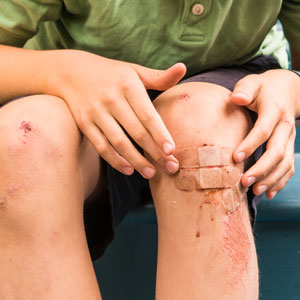
This injury occurs when the knee experiences either an external (trauma) or internal (self-induced) force that puts the anterior cruciate ligament under strain causing it to either sprain or rupture. This is a very debilitating injury that has serious repercussions for the knee.
Mechanism of injury
The mechanism of this injury can be two-fold: either through a direct blow to the knee in the form of a tackle or from a single plane force where the lower leg is rotated while the foot is fixed because the foot is kept in place by the studs on the rugby boot and there is excessive rotation of the lower leg.
The problem with this injury is that it is seldom just the anterior cruciate ligament that gets injured. Other structures such as the joint capsule, the lateral collateral ligament and even the posterior cruciate ligament can be and usually are involved. In certain cases there is also the added problem of meniscus involvement.
When the knee suffers from this injury, there are also usually major instabilities in the knee that include anterolateral instabilities as well as rotatory instabilities. This emphasises the fact even stronger that post-injury/operative rehabilitation is of the utmost importance.
Symptoms
The athlete who suffers from this problem will experience a “pop” followed by immediate disability, discomfort and pain. The knee joint often feels very unstable (and in truth it is very unstable) with the result that it will be virtually impossible for the athlete to put their full weight on the knee. Rapid swelling and discoloration of the joint will also accompany this injury.
Time out of action
In the worst case scenario, with the worst degree of ligament injury, the treatment involves an operation to reconstruct the knee with the athlete spending three to five weeks in a brace and up to six months in rehabilitation. If the athlete returns too soon from this injury not he runs the risk of re-injuring the joint. He may also have lingering mental and psychological issues relating to the injury. As a result, he may be fearful and hesitant to perform at maximum intensity on the field. This may lead to sub-par performances on the rugby field with the resultant negative effects that it will have on the athlete. –
(Conrad Booysen, Biokineticist, updated October 2010)




 Publications
Publications
 Partners
Partners










